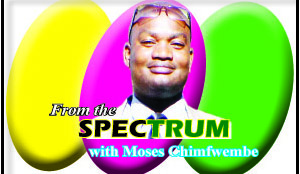 ALTHOUGH athletes are subject to aging versus performance race, a few interventions have proved otherwise in defeating the biological possibilities of dwindling feat when age slowly catches up with them.
ALTHOUGH athletes are subject to aging versus performance race, a few interventions have proved otherwise in defeating the biological possibilities of dwindling feat when age slowly catches up with them.
Many athletes complain that the ability to recover from hard bouts of exercise diminishes as they grow old and maintaining stamina becomes a challenge.
Stamina is the body’s ability to endure prolonged activity like exercise. However, aging affects the muscles as well, resulting in the slowing of the muscle reaction as the athlete’s body works harder to perform in challenging conditions.
Performance decline is not just about physical changes, however. As athletes age, the intrinsic motivation to train reduces.
In most sports, there is an age ‘sweet spot’ at which the combination of physical, technical and strategic abilities comes together and falls in the mid-20 to early 30’s
The vast majority of these abilities during the sweet spot come from sports requiring exceptional skill and less aerobic or anaerobic power, such as the shooting event.
For endurance events, the upper cap for competing at the sport’s highest levels appears to be around the age of 40.
For instance, Chipolopolo striker Winston Kalengo made his national team debut last year at the age of 30.
Against all odds, the former Zesco United talisman claimed the Player-of-Year Award at the 2015 MTN-FAZ awards ceremony after bagging the golden boot.
In principle, the age of 30 is considered as a summary to one’s career, but Kalengo is a good example of players that have excelled beyond the ‘sweet spot’.
In many contact sports, the increasing effects of hard hits become the limiting factor in continuing to play at the highest level.
One of the major setbacks that have ended people’s careers in the sports fraternity are injuries.
Injuries take their toll on people playing non-contact sports as well. Experiencing more training-associated injuries leads to reduced training intensity and volume, and thus poorer performance come race day.
However, with better training and recovery practices, in the coming years we’re likely to begin to see more athletes in their 40’s remaining competitive at the highest levels of sport.
By “training smarter, not harder,” athletes can reduce the chances of injuries, maximise gains from training and minimise the effects of aging.
Older athletes need longer to recover and adapt to a training stimulus, so workout planning needs to change with age.
While these things occur naturally, it’s easy to address them. Exercise and activity can have lasting benefits later in life, so it’s important to stay healthy by continuing to play sports or some kind of daily activity like walking, exercising or active hobbies.
Maintaining a healthy diet and eating high levels of protein for healthy muscles is more important than ever for aging athletes.
High-intensity interval training, for instance, focuses on the quality of a workout, rather than the sheer volume of training.
Cross-training, such as weightlifting, can help to maintain muscle mass and flexibility, and reduce overuse injuries in endurance athletes.
An emphasis on “active recovery” strategies (an easy run or swim on your rest days) and improved sleeping habits are important for athletes of all ages, but become essential for older athletes.
Beyond that, there are perhaps no better ways for athletes to maintain optimum health and stamina other than following good diet and lifestyle.
Fruits and vegetables are strongly recommended as they are loaded with vitamins and nutrients that the body requires, along with pursuing a daily regimen of exercise and positive activities. Sports of any kind can be enjoyed for years while athletes’ age and performance can even improve.
For comments: moseschimfwembe@gmail.com






